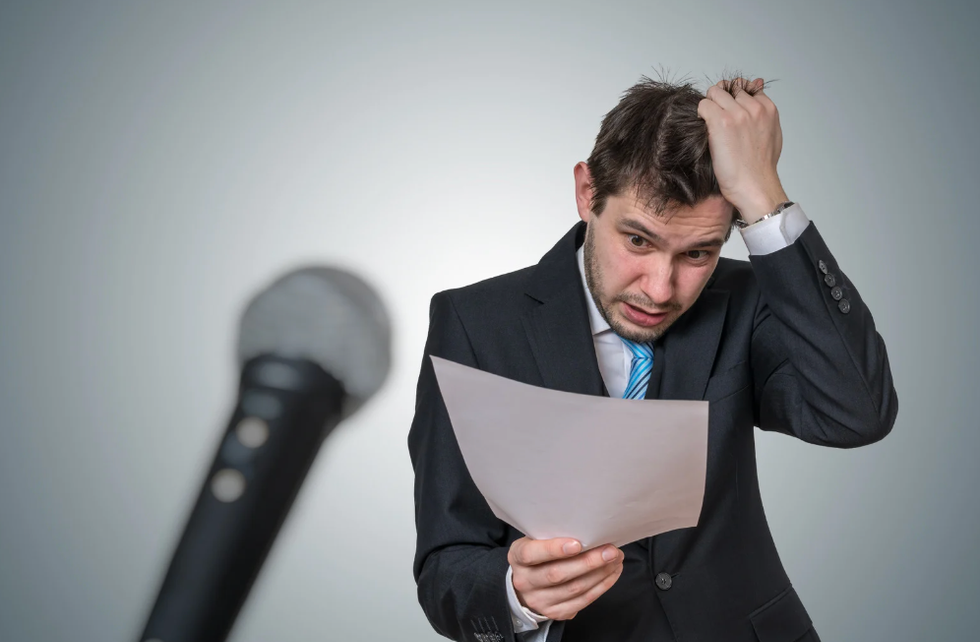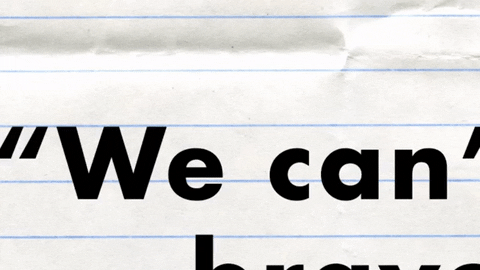I met Haben Girma, 28, a disability rights lawyer and the first deaf-blind graduate of Harvard Law School, after she’d just skied down Powder Mountain in Eden, Utah. She was a keynote speaker at a conference taking place there—telling about 150 attendees, including me, about her life as a deaf-blind advocate for people with disabilities.
That afternoon, Girma had skillfully negotiated that difficult slope, holding hands with a man she’d just met. He signed into her hand whether to turn left or right, slow down, or stop. When I sat with her, typing my questions into a wireless keyboard that Girma could read on her Bluetooth electronic braille display, I asked her what it felt like to ski. She answered like any of us would: “It’s a unique physical experience of sliding, gliding. It’s exhilarating—the wind that’s blowing, and the wind you create by moving through the air,” she said.
This was far from the first of Girma’s physical feats that most sighted and hearing people would be wary to perform. A White House Champion of Change, Forbes 30 under 30, and BBC Women of Africa Hero honoree, as well as a world-traveling speaker and disability rights trainer, Girma is also an avid surfer, ballroom dancer, and an aspiring improv comedian.
Girma has found inclusive communities of people who readily surf, dance, and ski with her, but that wasn’t always so. It’s been a long road and it has taken a lot of hard work and self-advocacy to gain access to these types of experiences and information. And, according to Girma, 57 million Americans with disabilities lack access to services in one particularly surprising environment: schools.
“Everything needs to be improved, like access to study abroad programs, math and computer science courses, and field trips,” says Girma. “A lot of universities struggle to figure out how to make science labs accessible to students with disabilities and field trips accessible to wheel chair users. Schools often fail to caption online videos or hire interpreters for assemblies, denying access to deaf students.”
[quote position="right" is_quote="true"]In high school we’re all focused on being ‘cool.’ That means not being kind to people who are different.[/quote]
Social access is also crucial. “Schools need to ensure that social activities like prom are accessible to students with disabilities. People with disabilities are everywhere and should be able to be part of every community. If you don’t see us in your community, try to identify and remove the barriers in your community,” says Girma. “A lot of those barriers are invisible—for example holding meetings in spaces that lack wheelchair access, sharing information on digital platforms that are not programmed for screen reader access for blind individuals, videos without captions, and more. Many schools and colleges are still inaccessible physically, socially, digitally.”
The Individuals with Disabilities Education Act (IDEA), which became a law in 1975, requires all schools to ensure students with disabilities a free and appropriate public education. Since then, the federal government has provided funding to schools to ensure access. However, in practice, this law isn’t carried out effectively.
“The federal government isn’t giving states and schools enough funding. They’re supposed to help with about 40 percent of the cost. On average they’re giving about 16 percent.” Also, only about 6 percent of teachers are qualified to teach deaf-blind students.
Girma, along with her brother, Mussi, who was also born deaf-blind, attended Oakland Public Schools for elementary through high school, where they were taught braille, worked with adaptive technology, and went hiking, river rafting, and skiing. While the California school district excelled at providing these confidence- and skill-building activities, they were far from perfect.
“In elementary school, I missed tons of information,” says Girma. “And I didn’t have the advocacy skills then to fight for access to that information.” High school was challenging because it was socially isolating. “In high school we’re all focused on being ‘cool.’ That means ignoring and not being kind to people who are different, and hiding the parts of ourselves that make us different. That was not fun. I like making friends just like everyone else,” says Girma.
At Harvard Law School, Girma had a great team in the disability department. “They helped me access everything,” she says. “I was part of the Harvard Ballroom Dance Team. They provided interpreters in class and social events.” Textbooks and exams were converted to braille. Two internships provided interpreters and materials in accessible digital formats. Other students were inclusive and she made many friends.
Girma comes from a family that embodies persistence and resilience. Her mother fled her native Eritrea in the 1990s because of the violence caused by the Eritrean-Ethiopian War. She walked to Sudan, where she stayed as a refugee for nine months and then came to the United States through a refugee organization. Her father immigrated to the states from Ethiopia to study chemistry at California State University, Fresno. “My parents’ stories taught me you keep going, you find solutions, your journey continues, you keep seeking opportunities,” says Girma.
[quote position="full" is_quote="true"]Curb cuts were created for wheelchair users. Now parents pushing strollers and people walking with luggage on wheels all benefit.[/quote]
In addition to ensuring that school buildings and materials are accessible, working for more federal and state funding, and advocating for adherence to IDEA laws, Girma believes a major boon for accessibility in education is digital. “When you develop or are updating a website or app, design with accessibility in mind,” she says. Both Apple and Android have accessibility guidelines for iOS and Android. Website developers can also use the Web Content Accessibility Guidelines. “Digital information starts as ones and zeros. Choosing to make that information available visually, audibly, and tactilely will allow the 1.3 billion people with disabilities worldwide to access your information,” Girma says.
Plus, accessible apps and websites mean a larger audience—and more customers—working toward accessibility drives innovation. “Curb cuts were created for wheelchair users,” Girma says. “Now parents pushing strollers, people walking with luggage on wheels, skaters, they all benefit from that innovation.”
Then there’s the example of video captions, which were initially used to help make videos accessible to deaf viewers. “Facebook reports that videos with captions have increased view time by 12 percent, in part because … people can engage with content in public without creating noise. Something that helps deaf individuals ends up benefiting the entire community,” says Girma.
Though recent government attempts to strip services and funding from programs that benefit people with disabilities have stirred up controversy, this isn’t a focal point for Girma, who remains optimistic about the power of educating and training people about accessibility.
“I worked as a disability rights litigator for about two and a half years,” she says. “We sued companies and government agencies for failing to comply with disability rights laws and denying access to people with disabilities. I realized that I prefer teaching people to do the right thing, rather than suing people who do the wrong thing.”
Girma accomplishes this by training organizations—including states and corporations—on disability rights. When it comes to schools, she often advises them that, “Inclusion should be the responsibility of every single person on campus.” By expanding beyond the disability department or minority organizations, everyone has a stake in realizing the perks of a more humane environment.















 Visualization of a black holeImage via Canva
Visualization of a black holeImage via Canva

 Speaking in public is still one the most common fears among people.Photo credit: Canva
Speaking in public is still one the most common fears among people.Photo credit: Canva muhammad ali quote GIF by SoulPancake
muhammad ali quote GIF by SoulPancake

 Let us all bow before Gary, the Internet's most adventurous feline. Photo credit: James Eastham
Let us all bow before Gary, the Internet's most adventurous feline. Photo credit: James Eastham Gary the Cat enjoys some paddling. Photo credit: James Eastham
Gary the Cat enjoys some paddling. Photo credit: James Eastham James and Gary chat with Ryan Reed and Tony Photo credit: Ryan Reed
James and Gary chat with Ryan Reed and Tony Photo credit: Ryan Reed


 Rock deterioration has damaged some of the inscriptions, but they remain visible. Renan Rodrigues Chandu and Pedro Arcanjo José Feitosa, and the Casa Grande boys
Rock deterioration has damaged some of the inscriptions, but they remain visible. Renan Rodrigues Chandu and Pedro Arcanjo José Feitosa, and the Casa Grande boys The Serrote do Letreiro site continues to provide rich insights into ancient life.
The Serrote do Letreiro site continues to provide rich insights into ancient life.